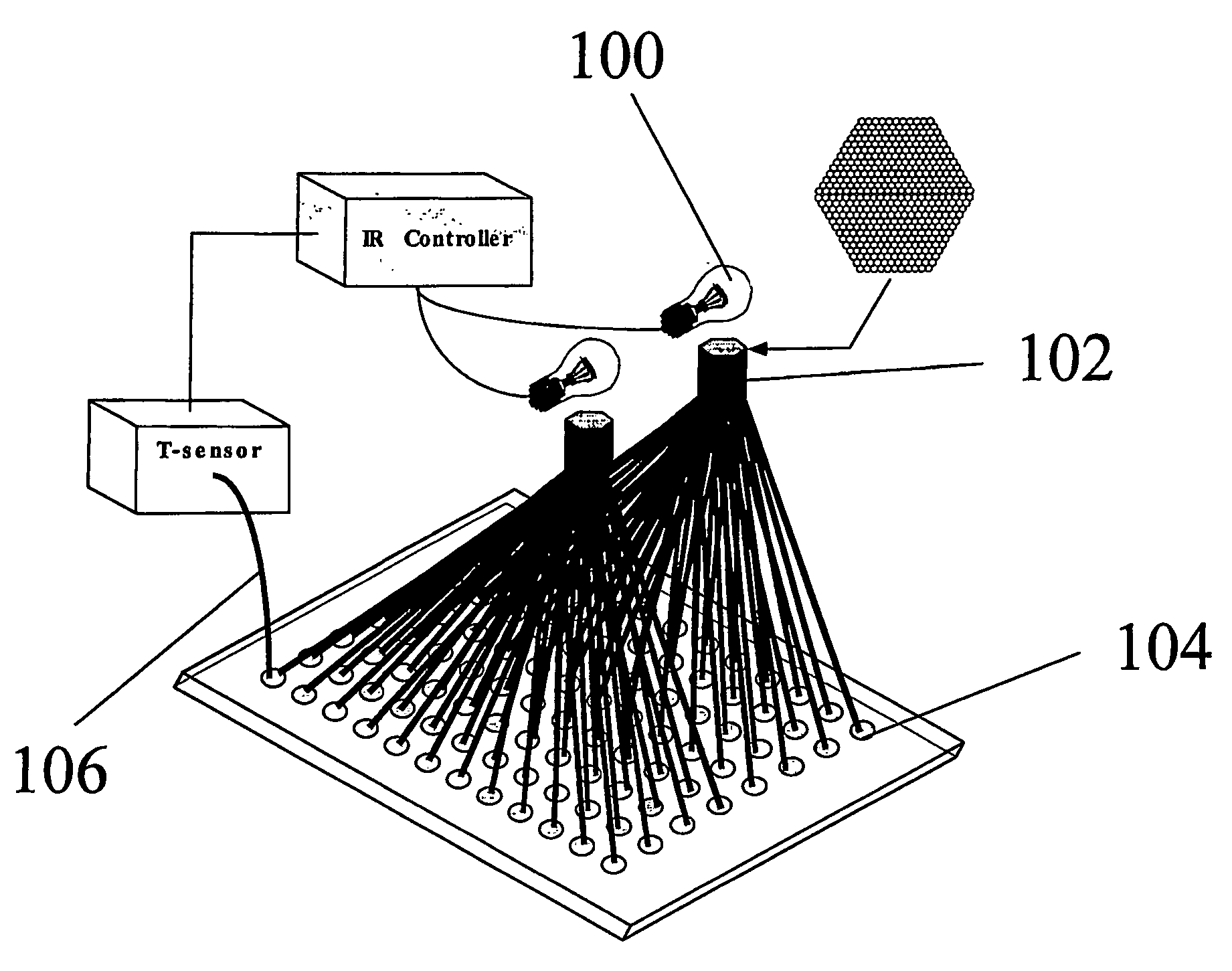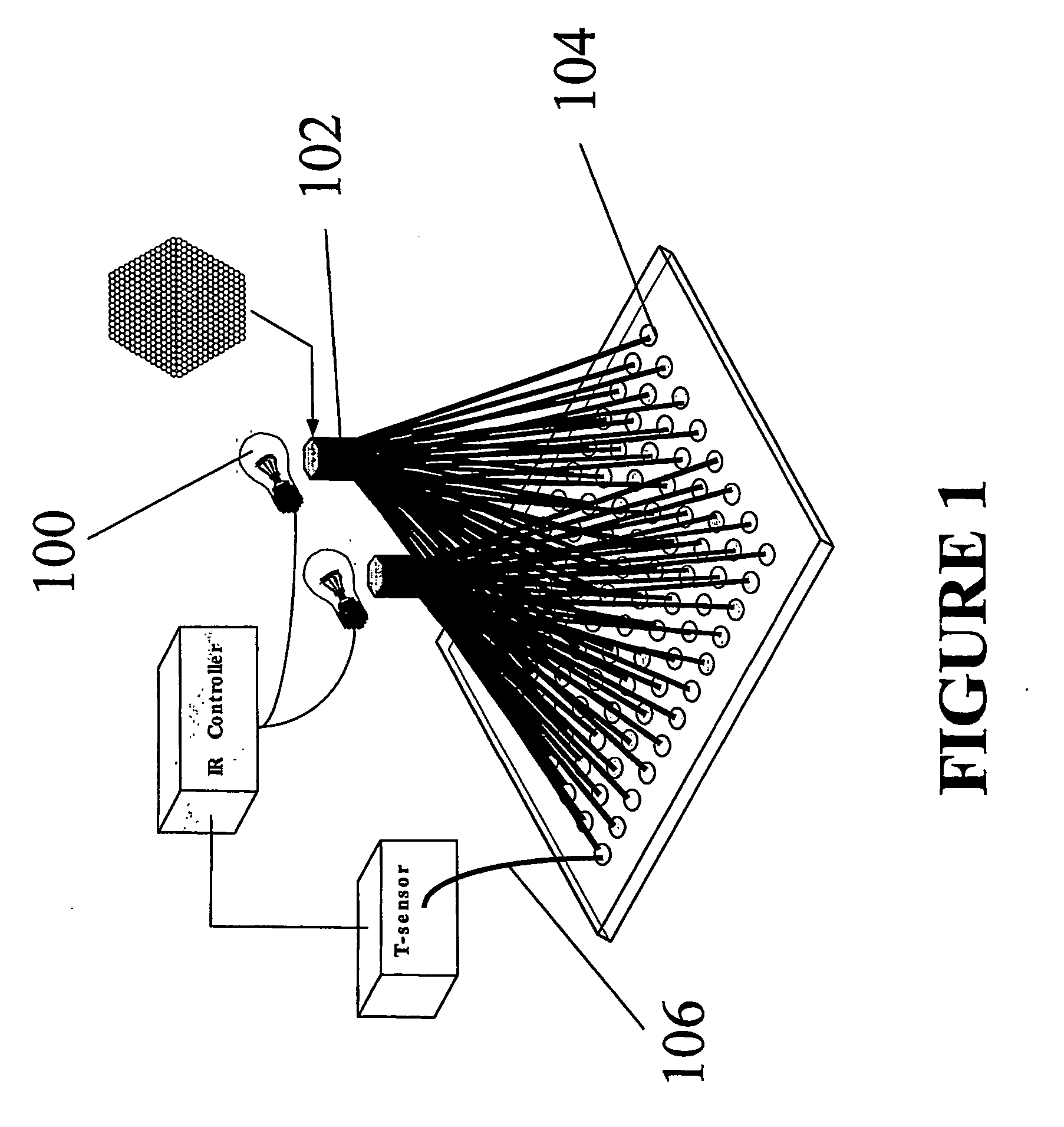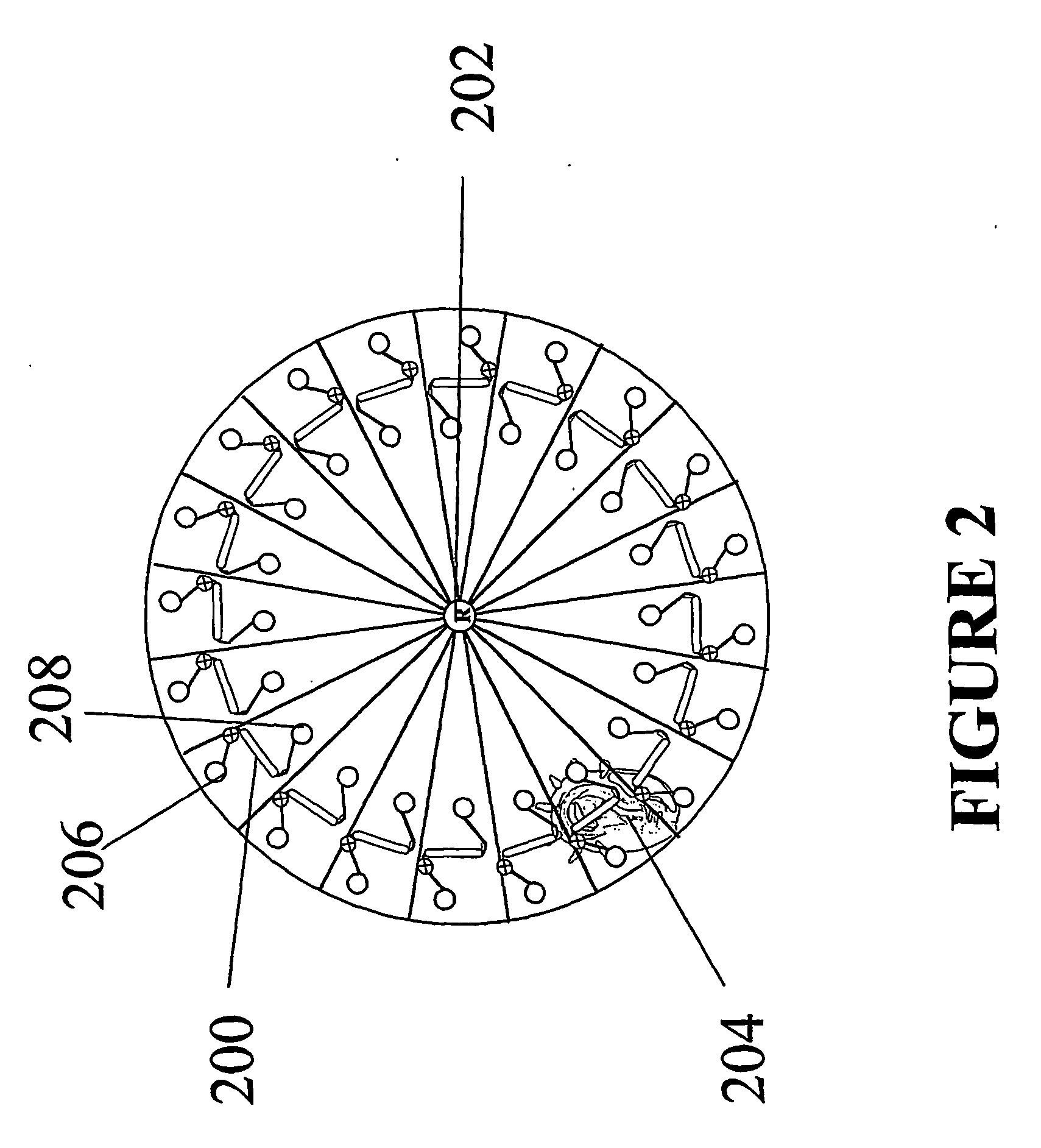Methods and systems for multiplexing ir-mediated heating on a microchip
a microchip and multiplexing technology, applied in the field of methods and systems for multiplexing ir-mediated heating on a microchip, can solve the problems of difficult to maintain homogenous sample temperature, provide amplification times that are not as rapid, and achieve the effect of accelerating the speed of each cycl
- Summary
- Abstract
- Description
- Claims
- Application Information
AI Technical Summary
Benefits of technology
Problems solved by technology
Method used
Image
Examples
first embodiment
[0059] A first embodiment involves using a fiber optic bundle to deliver heating radiation to the micro-heating areas. The irradiation from a powerful IR source can be focused into a bundle of optical fibers having the appropriate character for propagating the IR from the source to the micro-heating area In order for that to be a functional approach: 1) the IR source would have to have enough power to provide the appropriate amount of power to each micro-heating area; 2) there would have to be equivalent power distribution to each chamber; 3) each fiber would have to have equivalent radiation transmission properties and minimal power loss over the length of the fiber; and 4) there would have to be cooling homogeneity over the entire surface of the chip. Optical fibers produced for the telecommunications industry should be ideal for this purpose since they are designed for light propagation in the 1.3-1.4 μm range, exactly the preferred part of the spectrum used in IR-mediated heatin...
second embodiment
[0062] A second embodiment involves a spinning microchip having a thermocycling chamber / reservoirs design. In this approach, all IR sources are impingent on all micro-heating areas. That can be accommodated by using a circular microchip depicted in FIG. 2, where the thermocycling chambers 200 are arranged in a circular configuration on the chip. With that approach, all of the micro-heating areas fall on a concentric ring equidistant from the rotor 202, so that a spinning about the rotor would allow for all micro-heating areas to be accessed from a single static point. That creates the opportunity for an IR source(s) 204 to irradiate all micro-heating areas while the chip spins, thus avoiding inconsistencies with power impingent on any particular micro-heating area In addition, remote temperature sensing (not shown in FIG. 2, shown as element 400 in FIG. 4) would allow for more than a single micro-heating area to be interrogated for solution temperature.
[0063] With a microchip contai...
third embodiment
[0066] A third embodiment involves an IR bank and optical fibers to deliver IR radiation to micro-heating areas. This embodiment marries the concept of the first two embodiments into a single concept. With this configuration, there is a bank or array of IR sources 502 remote from the chip and, using optical fibers 504, the IR light is brought to the micro-heating areas 506 without over crowding the space above or below the chip.
[0067] Spinning the microchip 500 at a speed that allows for delivery of the appropriate amount of power to each micro-heating area 506 should allow for the desired temperature acquisition. In addition, a remote temperature probe (not shown) position above the micro-heating area 506 of the spinning chip 500 allows for temperature interrogation of all of the micro-heating areas, provided the time constant for sensing is small enough.
PUM
 Login to View More
Login to View More Abstract
Description
Claims
Application Information
 Login to View More
Login to View More - R&D
- Intellectual Property
- Life Sciences
- Materials
- Tech Scout
- Unparalleled Data Quality
- Higher Quality Content
- 60% Fewer Hallucinations
Browse by: Latest US Patents, China's latest patents, Technical Efficacy Thesaurus, Application Domain, Technology Topic, Popular Technical Reports.
© 2025 PatSnap. All rights reserved.Legal|Privacy policy|Modern Slavery Act Transparency Statement|Sitemap|About US| Contact US: help@patsnap.com



